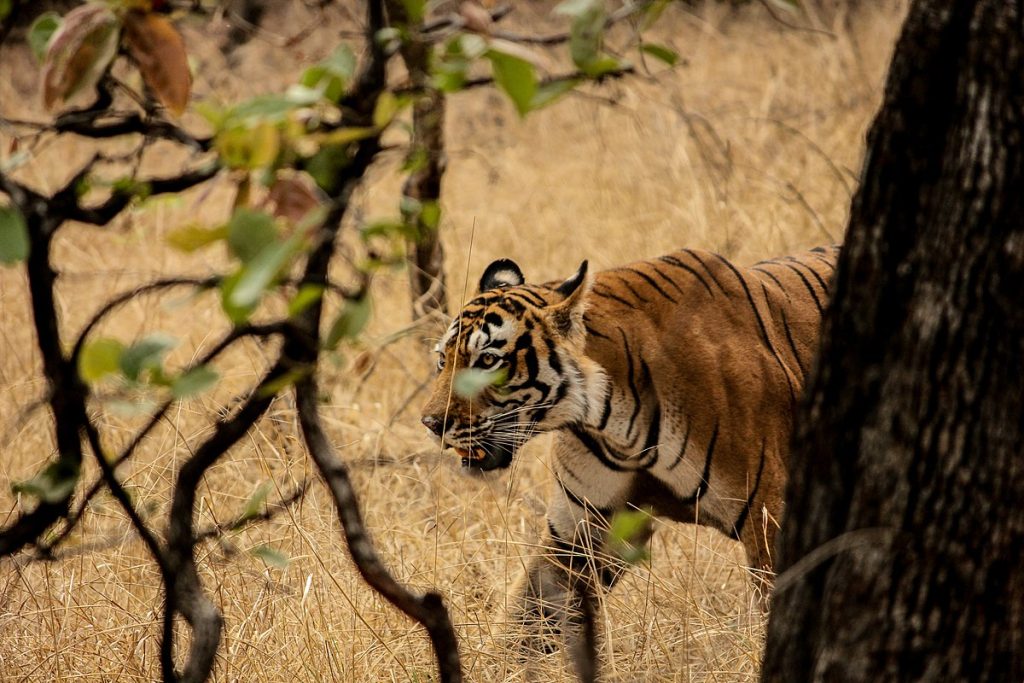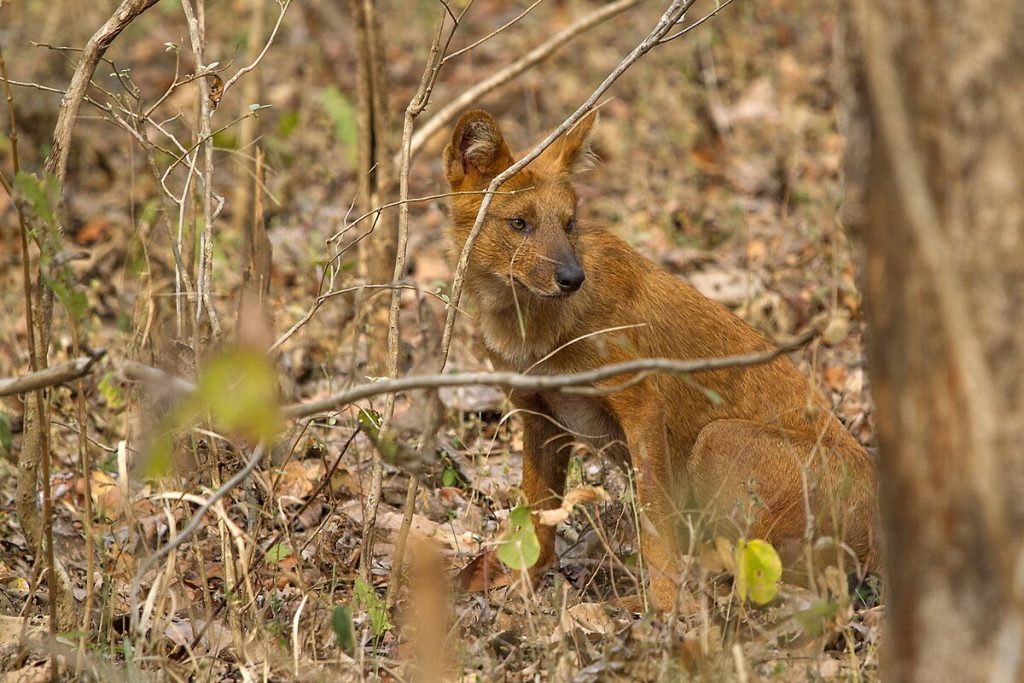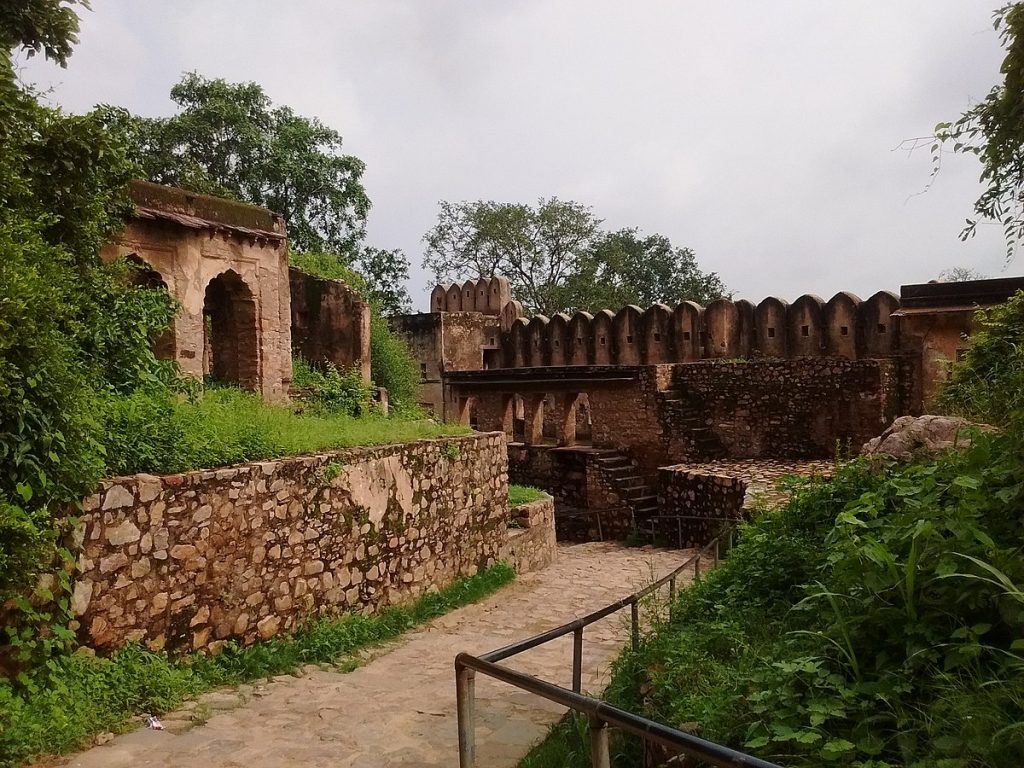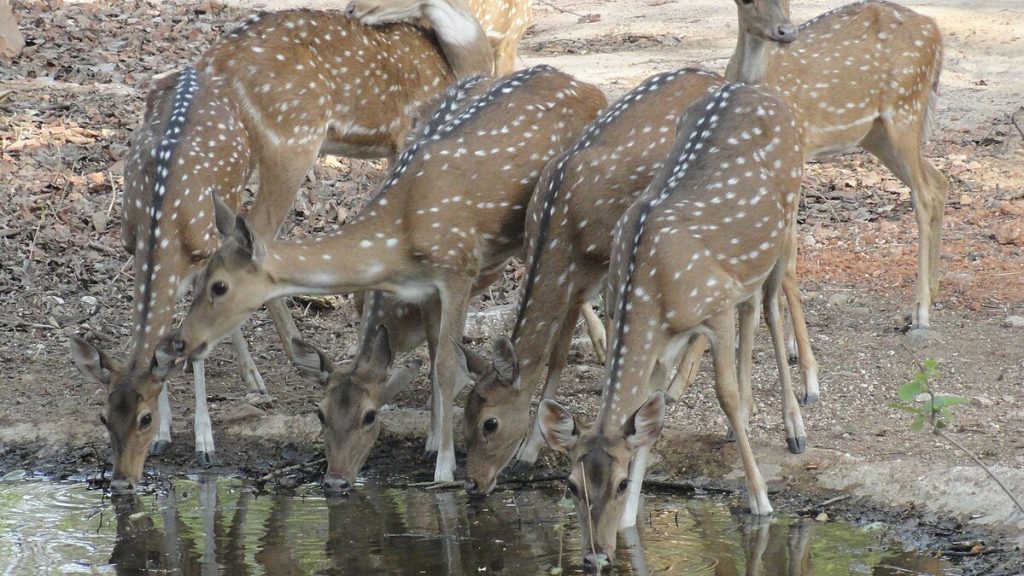Home to elusive Royal Bengal tigers, leopards, hyenas alongside endangered bird species, Ranthambore National Park located 2 hours from Jaipur ranks amongst India’s most captivating wildlife destinations for tiger spotting adventures and glorious heritage set amidst sprawling deciduous forests dotted by hundreds of ancient temples and ruins. Its incredible biodiversity, evocative 10th century fort ruins, and village stays offering authentic cultural insights beckon wildlife and history lovers worldwide.
The park’s different zones offer varied habitats from dense forests, marshlands to rivers and hills. This is home to over 40 mammal species and 300+ birds thrive today after steadfast conservational efforts. Safaris promise up-close sightings of enigmatic tigers, leopards, antelopes alongside exotic feathered residents.
Reaching Ranthambore Tiger Reserve

By Air: Jaipur International Airport located 180km east has economical flights connecting globally via hubs like Delhi and Mumbai. Pre-book cabs for onward 3.5-hour picturesque drive to Ranthambore entry gate for check-in. Taxis charge around INR 3000-4000 based on vehicle type.
By Rail: Well connected to Delhi and Mumbai by train. Travelers arrive at Sawai Madhopur junction, which is just 11km from park gates. With easy access to auto-rickshaw services for the last mile.
By Road: Luxury coaches connect Delhi and other cities to Ranthambore directly. Drive time from Jaipur or Agra is 3-4 hours through well-maintained highways.
Best Time for Wildlife Spotting
October to May (avoiding peak summers) offer pleasant weather and maximum tiger sightings. In summers animals venture frequently to waterholes with temperatures peaking at 40 degrees Celsius. Winters allow crisp viewings through lush landscape sans foliage.
Top 5 Attractions in Ranthambore Tiger Reserve
1. Jeep Safari
Nothing matches the thrill of open top gypsy vehicles entering the forest at dawn chasing tiger spottings!
2. Ranthambore Fort
This historic 10th century Chauhan dynasty fortress looms over the park promising panoramic views and rich heritage as you dodge resident langurs and bats!
3. Birdwatching Trails
Spot over 320 avian species like eagles, vivid kingfishers, kites and more amid wetlands, forests through guided trails.
4. Village Stays
Opt for rural accommodations like Nahargarh Biological Park resort. It is run by former poacher turned conservationist logistics revenue helping employ and upskill locals.
5. Temples
Marvel centuries-old intricately carved temples inside park premises like Trinetra Ganesh temple housing all the family members of Lord Ganesh.
Jeep Safaris for Big Cat Sightings

Nothing matches open-top 4×4 gypsies entering the park at sunrise stealthily tracking pugmarks hoping for Royal Bengal tiger sightings amid their natural habitats – magical moments birthing stories retold for decades! Safaris traverse picturesque terrains – from meadows filled with samba deer herds, marshes housing reptiles like marsh crocodiles to hillocks with scenic fort backdrops.
Dhole packs hunting, mother bears with cubs ambling nearby are common with luck playing key for leopard or tiger sightings during permitted hours. Smaller mammals like sloth bears, golden jackals, striped hyenas, desert cats, rats, wild boars, langurs, macaques also abound in scrublands. Reptiles including marsh crocodiles, pythons, vipers and more also thrive.
Avian Delights Across Wetlands
The forests and wetlands nurture over 320 bird species providing year-round delights for passionate birdwatchers. Just an hour of observation from trained naturalists reveals painted storks, river terns hovering over glistening lakes, vibrant kingfishers, majestic ospreys circling chitals grazing meadows for prey and agile falcon families across grasslands.
Darter colonies around Rajabagh lake, families of wild peacock dancing midst thickets, flocks of rufous treepie foraging shrubs as parakeets chirp merrily, crested hawk eagles perched towering over jungles – all promise avian drama! Winters draw migratory birds like pochards and gadwalls from Europe swiftly swimming cross emerald lakes joining their domiciled cousins.
Cultural Interactions at Village Stays

Beyond wildlife, interacting with locals provides penetrating insights into harmonious coexistence between preserved wilderness and rural habitations dependent on forests. Opting for village stays like Nahargarh Biological Park – an erstwhile maharaja’s hunting property under community management today provides authentic cultural immersions.
Revenue generated provides alternative livelihoods minimizing poaching and funds restoration of heritage structures like fort ruins, centuries-old stepwells and temples strewn across park terrain showcasing fascinating heritage. Locals share legends over evening bonfires – perfect ending to eventful jungle days!
2-Day Budget Ranthambore Itinerary
Day 1: Arrive Sawai Madhopur early morning. Transfer to your booked hotel. park entry booking afternoon gypsy safari through lush forest zones for tiger luck before closing. Enjoy folk dances overdinner. Arrive at Sawai Madhopur station and transfer to eco-friendly hotel, which are generally near the park’s entry. After check-in, proceed for evening safari booking gypsy trail through forest zones chasing tiger, leopard, deer sightings until post sunset park closure. Retire for cultural performance over dinner.
Day 2: Wake before dawn for morning safari through misty meadows hoping spotted big cat sightings. Breakfast in jungle. Post safari checkout for return train waving local friends goodbye but carrying abundant stories and snapshots of a magnificent wildlife haven thriving against odds purely due to collective human passion!
Reflecting on Conservation

As the jeep exits tiger territory boundaries into buffer zones with villages after an exhilarating morning safari through untamed forests, I glance back one last time feeling profoundly grateful. Spotting elusive wild cats has been a cherished dream fueling this pilgrimage. Beyond thrilling sightings, these jungles reinforce how balancing human needs and natural habitats is interwoven work-in-progress.
From erstwhile hunting grounds of royalty to protected parks sustaining over 40 mammals and 300+ birds today – Ranthambore underscores collectivism and passion. Tourists, conservationists, erstwhile poachers-turned-guides and villages – each play a part upholding this richness. Revenue emerging from responsible tourism directly supports forest restoration and alternative livelihood creation minimizing poaching while funding village healthcare, education and heritage preservation efforts.
The roots of sustainability, I realize, lie in aligning environmental and economic pathways for communities dependent on delicate ecosystems like Ranthambore. Its integrated model offers replicable lessons for wilderness pockets worldwide. As the famed Rufous Treepie bids me goodbye, I know I will return soon to both marvel wildlife as well as nurture the human collaborations protecting these enchanting forests for posterity!
